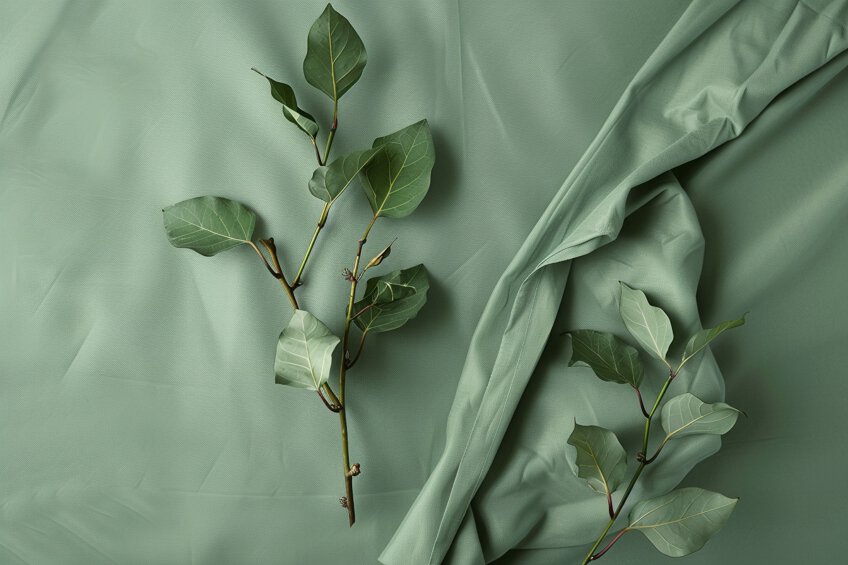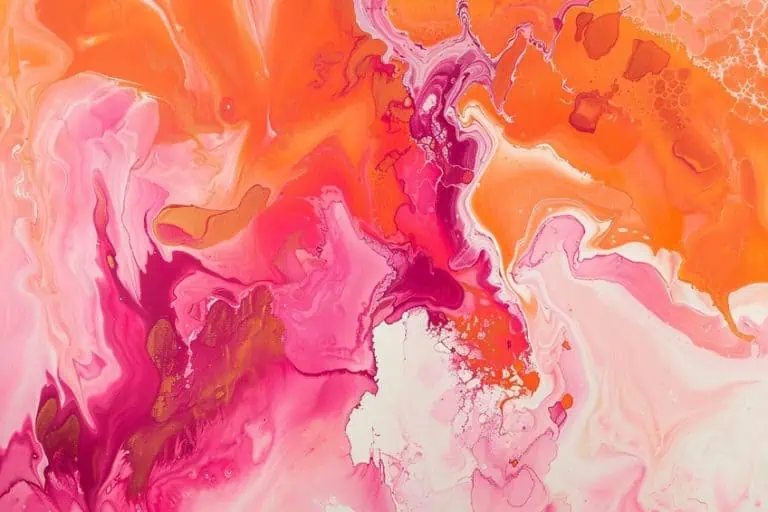Meaning of the Color Sage Green – Soothing Serenity
This post may contain affiliate links. We may earn a small commission from purchases made through them, at no additional cost to you.
Welcome to the enchanting world of color! Today, we embark on a journey to unravel the mysteries of sage green, a hue that whispers tales of tranquility and nature’s harmony. Imagine strolling through a serene garden, where the leaves rustle softly in the breeze, and the scent of earth and freshness dances in the air. Sage green, with its subtle blend of gray and green, is like a wise sage sharing secrets of balance and renewal. Join me as we delve into the symbolism, psychology, and cultural significance of this delightful color, uncovering its hidden depths and vibrant presence in our lives. Let’s paint the town sage green!
Table of Contents
Key Takeaways
- Sage green embodies growth and tranquility, balanced by wisdom and neutrality.
- Its calming effect is often utilized in design to create serene environments.
- Sage green’s versatility allows it to harmonize with a wide range of color palettes.

The Symbolism of Sage Green
Sage green is more than just a color that meets the eye; it carries with it a profound blend of meanings and connotations. Straddling the line between green and gray, sage green encapsulates the vitality and renewal commonly associated with green, while introducing an element of wisdom and calmness originated from its gray undertones.
It’s a hue that resonates with nature and the organic, often evoking thoughts of peaceful landscapes and restorative spaces.
This earthy, muted color has been known to symbolize balance, growth, and tranquility, making it a favored choice in design and fashion for those seeking to create a soothing atmosphere. Sage green’s versatility allows it to be both a statement color and a neutral, depending on its application. Importantly, in the realm of psychology, sage green can have a calming effect, reducing anxiety and encouraging a sense of well-being.
Historical Significance
Historically, sage green’s ties to nature are reflected in its name, which originates from the herb sage, a plant associated with healing and peace. In the context of color meaning, it conjures a sense of balance and harmony, qualities highly regarded across various societies. Its use in ancient times often denoted wisdom—a trait ascribed to the sage, a figure known for profound knowledge and judiciousness.

Cultural Context
In the cultural realm, sage green’s connotations of growth and renewal make it a favored choice in design with a nod to sustainability and eco-friendliness. Its psychological impact leans towards evoking a state of calm and its muted hue insinuates a sophisticated and timeless aesthetic.
The color’s versatility translates well across fashion, interiors, and branding, where it is employed to create a sense of groundedness and environmental awareness.
Sage Green Color Properties
Sage green exhibits a soothing quality with a blend of green and gray hues, striking a balance between the natural world and understated elegance.

Shades and Tints
Sage green, at its core, is a pale grayish-green color, often associated with the herb sage, which is known for its woody stems and grayish leaves. A soft and subdued hue, it can lean towards various shades; dark sage green adds more depth and can integrate subtle undertones of blue-green, while light sage green offers a more airy and light appearance with possible accents of yellow.
The versatility of sage green includes its ability to harmonize well with a spectrum of tints and shades, including taupe, neutrals like white, and brown, without overwhelming the inherent tranquility of the color.
Color Codes and Formats
Sage green’s color-specific information allows for consistency across various digital and print mediums:
- Hex: #9C9583 (a typical sage green)
- RGB (Red, Green, Blue): 156, 149, 131
- HSL (Hue, Saturation, Lightness): 39°, 12%, 56%
- HSV (Hue, Saturation, Value): 39°, 16%, 61%
- CMYK (Cyan, Magenta, Yellow, Key/Black): 0%, 4%, 16%, 39%
For web design and development purposes, sage green can be rendered in CSS using these values to ensure accurate representation. The color’s hex code is often the most utilized format for its simplicity and ubiquity in digital design tools. The lightness and saturation values reflect sage green’s subdued and soft essence, critical for achieving the correct visual impact.

Meaning of the Sage Green Color
Sage green is a color deeply rooted in the natural world, symbolizing a blend of growth and wisdom, with a touch of maturity brought by its gray undertones.
Positive Associations
- Health and vitality: Sage green represents a state of good health and is often associated with medicinal herbs. It signifies the vitality of life and nature’s bounty.
- Balance and harmony: The color’s link to tranquility and balance makes it a soothing presence in design, promoting a calm and harmonious environment.
- Growth and renewal: Reflecting growth, sage green inspires fresh starts and renewal, reminiscent of nature’s constant state of rejuvenation.

Negative Associations
- Inexperience: Its pale hue can sometimes symbolize immaturity and inexperience, contrasting with its other associations of wisdom.
- Stagnation: While it embodies growth, the more subdued gray in sage green might evoke feelings of stagnation or a lack of vibrancy in certain contexts.
Personality Traits Associated With Sage Green
Individuals who are drawn to sage green often showcase a personality that is grounded and balanced. They may be perceived as individuals with a calm demeanor and a practical outlook on life.
- Tranquility: Sage green enthusiasts typically possess a tranquil nature, exuding a sense of peace and stillness that can be comforting to those around them.
- Wisdom: They may also be associated with wisdom, often demonstrating a mature and thoughtful approach to problem-solving.
- Growth: A preference for sage green suggests traits of personal growth and renewal, indicating an individual who values self-improvement and learning.
- Stability: People who like sage green may be seen as stable and reliable, providing a solid foundation in both their personal and professional relationships.
- Environmentally conscious: An affinity for sage green can reflect an environmental awareness and a commitment to sustainability.
The color’s connection to balance, healing, and harmony make it a likely favorite for those who seek to maintain equilibrium in their lives. Furthermore, their inclination towards sage green might hint at a propensity for introspection and a deep connection with nature.

Psychological and Emotional Aspects of Sage Green
Sage green, a color balancing between green and gray, typically evokes a range of psychological and emotional responses. In psychological terms, the color is associated with tranquility and calmness. It’s believed that sage green’s soothing nature can reduce stress and promote relaxation. Emotionally, sage green is tied to notions of growth and renewal. This connection might be due to green’s pervasive presence in the natural world, symbolizing life and vitality. As a result, people often feel a sense of comfort and refreshment in environments featuring this color.
Sage green, with its gray undertones, brings forth a unique blend of wisdom, maturity, and neutrality.
The infusion of gray adds a sense of grounded knowledge and experience, symbolizing wisdom and maturity. Moreover, the neutrality of sage green provides a balanced and impartial backdrop, striking a harmonious chord that is neither overstimulating nor subdued. This combination of qualities makes sage green not just a color choice but a reflection of a well-rounded and balanced perspective in our lives and surroundings.

The use of sage green in interior spaces is thought to promote both a physical and emotional sense of balance. It’s gentle on the eyes and can contribute to a serene atmosphere, making it a popular choice for bedrooms and living spaces. Overall, sage green’s psychological and emotional influence suggests it is a versatile color. It can inspire a range of positive feelings, including stability and comfort, thanks to its natural and earthy qualities.
Sage Green in Design
Sage green has become a cornerstone in design due to its unique versatility and the calming, earthy aesthetic it provides. It serves as a neutral color that pairs well with a variety of color palettes, and its inherent neutrality allows designers to use it across various applications.

Sage Green in Interior Design
Sage green is a favored choice in interior design, appreciated for its subtle blend of green with gray undertones. This color introduces a sense of tranquility and balance to living spaces. In the context of interior design, sage green acts as an excellent backdrop for both modern and rustic styles.
Major paint brands such as Sherwin-Williams and Benjamin Moore offer a selection of sage green shades, providing options that range from lighter, more muted tones to richer, deeper hues.
Color pairings and accents include:
- Complementary colors: To create a harmonious color scheme, designers often pair sage green with warm neutrals, soft pinks, and rich earth tones.
- Accents: For a more dynamic space, dark accents in furniture or artwork can contrast beautifully against a sage green backdrop.
Fashion and Branding With Sage Green
In fashion, sage green conveys a sophisticated, yet earthy vibe. It is common in both seasonal collections and sustainable, eco-friendly clothing lines, where its natural look aligns with a message of environmental awareness. Features in branding include:
- Connotations: Brands seeking to portray wisdom, growth, and eco-consciousness might incorporate sage green into their design strategy.
- Versatility: Sage green’s adaptability makes it suitable for a wide range of industries, from home decor to wellness and beyond, without overwhelming the brand’s visual identity.

Fashion Combinations:
- Neutrals: Sage green is often combined with other neutrals for a sleek, minimalist fashion statement.
- Bright accents: To add a pop of color, designers might introduce vibrant accents that contrast against sage green’s subdued presence.
Incorporating Sage Green into Lifestyle
Sage green is a hue that can enhance one’s lifestyle through its representation of nature, health, and tranquility. This versatile color lends itself to promoting a sense of balance and calmness, and its incorporation into various aspects of life can foster an atmosphere of growth and renewal.
Home Decor and Feng Shui
In home decor, sage green is often associated with creating a soothing and relaxing environment. It can be used in various elements such as:
- Wall colors: Painting walls sage green fosters a calming backdrop that encourages relaxation.
- Furnishings: Incorporating sage green through furniture or accents can contribute to a tranquil setting that invokes comfort.
The color aligns with Feng Shui principles by embodying freshness and stability, potentially enhancing the flow of positive energy through a space while fostering a connection to nature.

Wellness and Self-Care
Utilizing sage green in wellness spaces can bolster both physical and mental well-being:
- Yoga and meditation areas: Sage green is conducive to meditation and yoga practices, making these spaces ideal for relaxation and self-reflection.
- Healthcare environments: The color’s healing properties can be utilized in healthcare settings, aiding in creating a restful atmosphere conducive to recovery.
Its calming effect is believed to offer a sense of renewal, essential for spaces dedicated to self-care and healing.
Nature and the Environment
Sage green also embodies an eco-friendly perspective and is appreciated by nature lovers due to its origin in the natural world:
- Garden spaces: Integrating sage green through plant selections or garden accessories resonates with the color’s organic roots.
- Eco-friendly products: Selecting items that feature sage green can reflect a commitment to eco-conscious living by emphasizing a connection to the environment.
This color supports an individual’s aspiration to lead a healthier, more balanced lifestyle, and it signifies a respect for the regenerative aspects of nature.

Frequently Asked Questions
What Is the Spiritual Significance Associated With Sage Green?
Sage green, often associated with nature, carries a spiritual meaning of balance and tranquility. It also embodies wisdom and growth, representing a connection to the natural world.
How Does Sage Green Influence One’s Personality Traits?
Individuals may find that sage green promotes a sense of calmness and relaxation. As a muted and earthy hue, it is thought to reflect reliability and an affinity for the natural environment.
What Are Some Popular Color Palettes That Include Sage Green?
Sage green is extremely versatile and pairs well with numerous colors. It is often used in neutral palettes, matched with both warm tones like beiges and taupes and cool hues such as blues and grays, creating a cohesive and balanced look.
Duncan graduated with a diploma in Film and TV production from CityVarsity in 2018, after which he continued pursuing film while taking on a keen interest in writing along the way. Since having graduated, he began working as a freelance videographer, filming a variety of music videos, fashion and short films, adverts, weddings and more. Throughout this, he’s won a number of awards from various film festivals that are both locally and internationally recognized. However, Duncan still enjoys writing articles in between his filming ventures, appreciating the peace and clarity that comes with it.
His articles focus primarily around helping up-and-coming artists explore the basics of certain colors, how these colors can be paired with other shades, as well as what colors are created when you mix one with another. All while relating these shades to historically significant paintings that have incorporated them into their color palette. As a lover of the arts himself, he takes great interest in the Renaissance era of paintings, an era that has directly inspired many of his favorite films.
Learn more about Duncan van der Merwe and about us.







